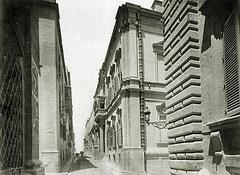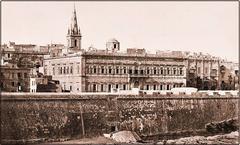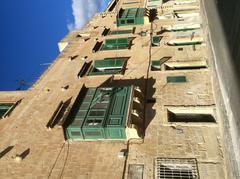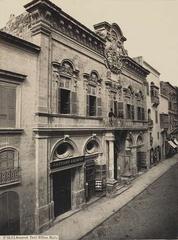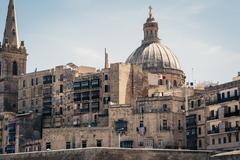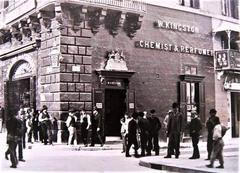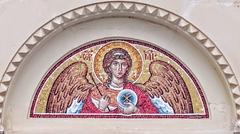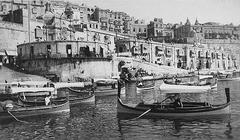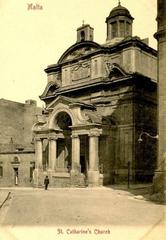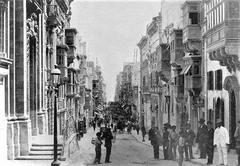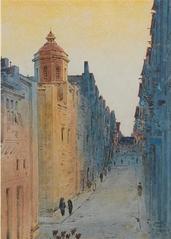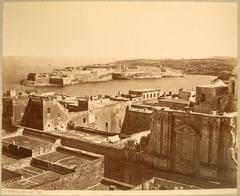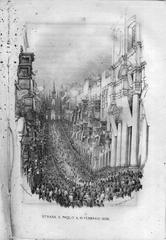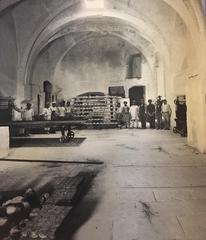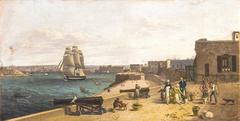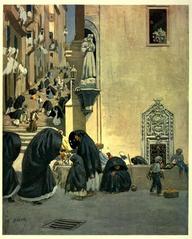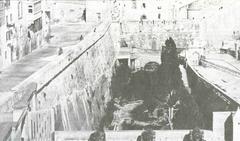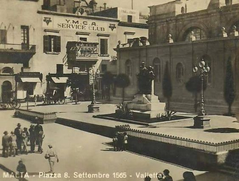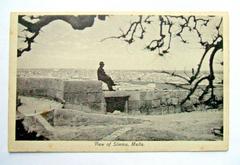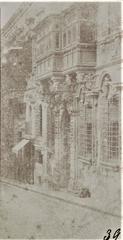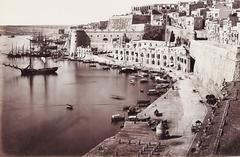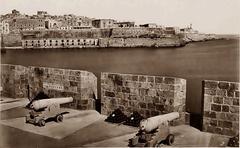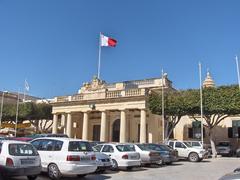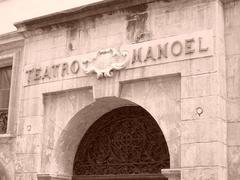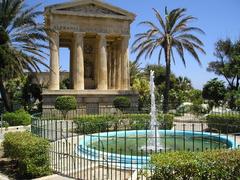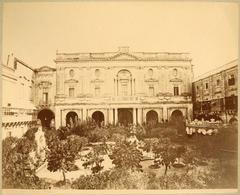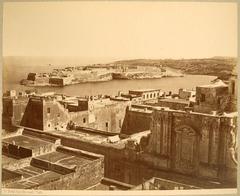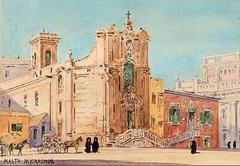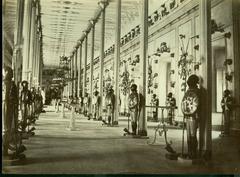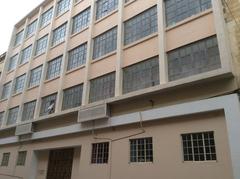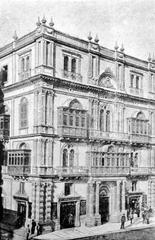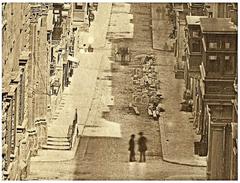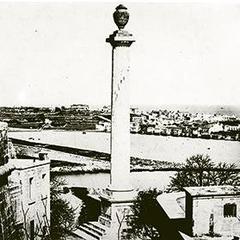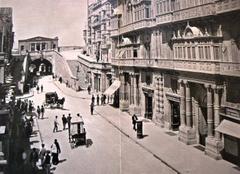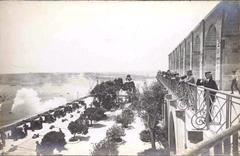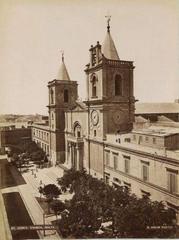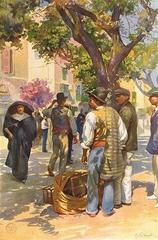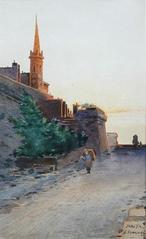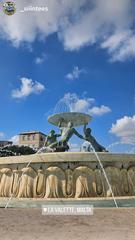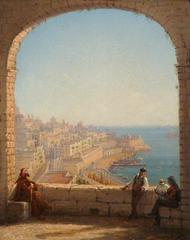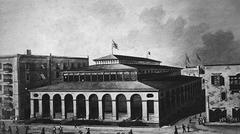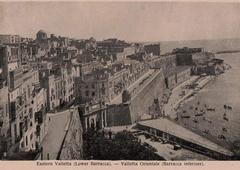Auberge d’Aragon Valletta Malta: Visiting Hours, Tickets, and Historical Significance
Date: 14/06/2025
Introduction
Auberge d’Aragon, nestled in the heart of Valletta, stands as a compelling symbol of Malta’s storied past. Constructed in 1571 under the guidance of Girolamo Cassar, it is celebrated as the oldest surviving auberge in the capital and the only one to retain its original Mannerist design. Once home to the Knights of the Order of Saint John from the Langue of Aragon, Navarre, and Catalonia, the auberge’s authentic Renaissance architecture and layered history make it an unmissable landmark for any visitor to Malta. This guide presents detailed insights into the building’s history, architectural features, visiting hours, ticketing, accessibility, and tips for making the most of your visit.
(Wikipedia; everything.explained.today; Times of Malta)
Table of Contents
- Historical Overview
- Visiting Information
- What to See
- Visitor Tips
- Frequently Asked Questions (FAQ)
- Conclusion
- References
Historical Overview
Origins and Construction
Auberge d’Aragon was commissioned by the Order of Saint John to house knights from Aragon, Navarre, and Catalonia soon after Valletta’s foundation in 1566. Designed by the famed Maltese architect Girolamo Cassar, the land was acquired in 1569, and construction began in 1571. The building’s purpose was both residential and administrative, reflecting the Order’s linguistic divisions and the fortification of Malta as a stronghold in the Mediterranean.
(everything.explained.today; schmalta.mt)
Architectural Features
Auberge d’Aragon exemplifies Mannerist architecture, characterized by balanced proportions and restrained ornamentation. The structure is a single-story, rectangular plan with a central arcaded courtyard that provides light and ventilation. The main façade features a central entrance flanked by moulded windows and a continuous cornice, with rusticated masonry corners accentuating the building’s solidity. The only major external addition is a neoclassical Doric portico, introduced in the early 19th century during British rule. The rear still shows traces of red ochre, a traditional color for Order buildings.
Internally, the building includes Renaissance-style rooms and, significantly, a system of underground spaces, including a bakery and water canals, discovered during recent restorations. These underground zones were initially used for stabling horses, later converted into a bakery in the 18th century.
The Hospitaller Period (16th–18th Centuries)
During the rule of the Order of Saint John (1530–1798), Auberge d’Aragon functioned as both home and headquarters for the knights of the relevant langues. The neighboring Church of Our Lady of Pilar, built in 1674, served their spiritual needs. Both structures were damaged in the 1693 Sicily earthquake but were swiftly repaired. The auberge’s underground systems highlight its practical adaptations for the Order’s everyday needs.
(Wikipedia; everything.explained.today)
Later Uses: French, British, and Modern Eras
Following the French expulsion of the Order in 1798, the auberge’s function shifted. Under British rule, it housed the government printing press, served as the Chief Secretary’s residence, and was later leased to Anglican Bishop George Tomlinson as Gibraltar House (with the Doric portico added during this period). Through the 19th and 20th centuries, the building served as a school, a hospital during World War II, and—most significantly—as the Office of the Prime Minister during crucial periods of Malta’s political evolution. Since 2020, it houses the Ministry for Justice and remains a core site of government activity.
(everything.explained.today; UM OAR PDF)
Heritage Status and Conservation
Recognized as a Grade 1 national monument on Malta’s National Inventory of Cultural Property, Auberge d’Aragon is protected within Valletta’s UNESCO World Heritage zone. Restoration efforts have been ongoing, particularly after World War II and in recent decades, ensuring the building’s structural integrity and historical authenticity.
Visiting Information
Location and Accessibility
Auberge d’Aragon is located at 59 Archbishop Street, Valletta, on the Marsamxett Harbour side, easily accessible from other major Valletta landmarks. The surrounding area is mostly flat, making it suitable for visitors with mobility challenges, although Valletta’s general terrain is hilly.
Visiting Hours
- Regular Hours: The auberge is a functioning government building and is not generally open to the public. However, the impressive exterior and piazza are viewable at any time.
- Special Events/Open Days: Interior access is occasionally granted during cultural festivals, heritage open days, or special exhibitions. Check local tourism websites or government announcements for information on upcoming events.
(DesignMT)
Tickets and Entry
- Entry Fee: There is no charge for admiring the exterior or piazza. Interior access during special events is usually free, with no standard ticketing system.
- Advance Booking: Not required for exterior visits; for special events, check official sources for any registration requirements.
Guided Tours and Special Events
While regular access to the interior is not available, many guided walking tours of Valletta stop at the auberge’s exterior, offering historical context and architectural insights. During open days or festivals, guided tours may be provided inside the building.
(Wikipedia; everything.explained.today)
Accessibility
- Exterior: The building’s location on a main street ensures good accessibility for wheelchairs and strollers.
- Interior: Accessibility inside depends on the nature of special events; check with organizers ahead of your visit.
What to See
Architectural Highlights
- Façade: The dignified Mannerist exterior, with subtle asymmetry and a commanding Doric portico, is a rare survivor of Cassar’s original vision.
- Courtyard: When accessible, the arcaded courtyard offers a tranquil space reflecting the Renaissance ideals of harmony and order.
- Subterranean Bakery: Recent excavations have revealed an underground bakery and water system, occasionally open to visitors during tours or festivals.
Nearby Attractions
Auberge d’Aragon is within walking distance of Valletta’s most important sites:
- St John’s Co-Cathedral: A Baroque masterpiece renowned for its opulent interiors.
- Grandmaster’s Palace: Former seat of the Knights, now Malta’s presidential office and armory.
- Manoel Theatre: One of Europe’s oldest functioning theatres.
- Upper Barrakka Gardens: Offering panoramic views of the Grand Harbour.
- Casa Rocca Piccola: A noble palace museum open to the public.
Visitor Tips
- Photography: The exterior is freely photographable; interior photography is permitted only during select events.
- Guided Tours: Enhance your experience by joining a Valletta walking tour or using an app like GPSmyCity.
- Footwear: Valletta’s streets are often uneven—wear comfortable shoes.
- Amenities: Numerous cafés and shops are nearby for refreshments and souvenirs.
- Event Listings: For interior access, monitor official tourism websites and event pages for open day announcements.
Frequently Asked Questions (FAQ)
Q: Is the auberge open to the public?
A: No, the building functions as a government office. The exterior can be viewed any time; interior access is only possible during specific public events.
Q: Are tickets required?
A: No tickets are needed; entry is free during special events.
Q: Is the site wheelchair accessible?
A: The exterior is accessible, though interior access varies depending on event arrangements.
Q: Are guided tours available?
A: Many Valletta city tours include a stop at the auberge’s exterior; guided tours of the interior are available only during special events.
Q: What are the best nearby attractions?
A: St John’s Co-Cathedral, the Grandmaster’s Palace, Upper Barrakka Gardens, Manoel Theatre, and Casa Rocca Piccola.
Conclusion
Auberge d’Aragon is a cornerstone of Maltese cultural and architectural heritage—its Renaissance façade, storied history, and enduring political significance make it a must-see for any visitor to Valletta. While interior access is limited, the building’s dignified presence, authentic design, and central role in Malta’s narrative provide an enriching experience. For a deeper exploration, plan your visit during heritage open days, use digital guides, and complement your walk with stops at Valletta’s other historic gems.
For the most current information on visiting hours, access, and special events, consult official Valletta tourism resources and government heritage sites. Enhance your experience using travel apps like Audiala and keep updated via local cultural platforms.
References
- Auberge d’Aragon — Wikipedia
- Auberge d’Aragon: Visiting Hours, Tickets, and Historical Guide — everything.explained.today
- One World: Protecting the Most Significant Buildings — Times of Malta
- The Heritage Value of the Auberges of the Order of St John in Valletta, Malta — University of Malta Open Access Repository
- 18th-Century Oven Found Inside Oldest Auberge — Times of Malta
- Auberge d’Aragon: Official Conservation Report — schmalta.mt
- 7 Impressive Auberges That Will Leave You in Awe — GuideMeMalta
- Valletta Attractions — Trek Zone
